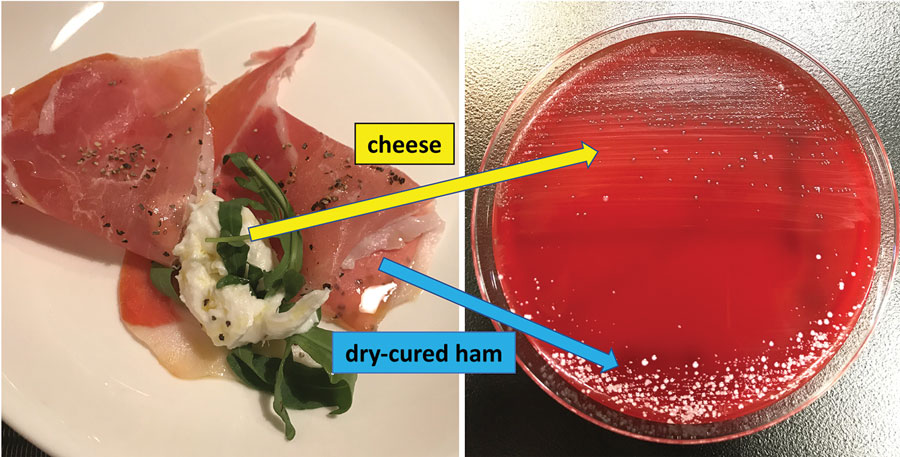Volume 26, Number 9—September 2020
Research Letter
Leuconostoc lactis and Staphylococcus nepalensis Bacteremia, Japan
Figure

Figure. Culture of cheese and dry-cured ham on blood agar medium from investigation of patient with Leuconostoc lactis and Staphylococcus nepalensis bacteremia, Japan. The colonies, cultured from cheese, were identified as L. lactis by matrix-assisted laser desorption/ionization time-of-flight mass spectrometry mass spectrometry; however, the colonies derived from dry-cured ham were identified as S. equorum and S. xylosus but not as S. nepalensis.
Page created: July 14, 2020
Page updated: August 20, 2020
Page reviewed: August 20, 2020
The conclusions, findings, and opinions expressed by authors contributing to this journal do not necessarily reflect the official position of the U.S. Department of Health and Human Services, the Public Health Service, the Centers for Disease Control and Prevention, or the authors' affiliated institutions. Use of trade names is for identification only and does not imply endorsement by any of the groups named above.